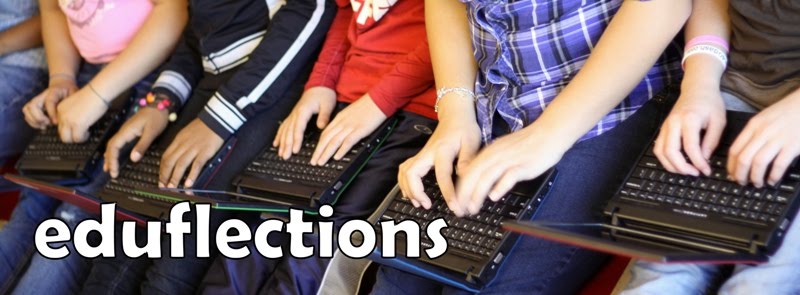Here are some of the things that I've learned this year:
- Be bold. Do not be afraid to speak up for your students. If we don't speak up for what is best for our students, no one else will.
- Share your students' successes. The community at large has a misconception of what accomplished teaching looks like in the 21st Century. Build a contact list of community leaders, legislators, board members, and parents and send them photos, stories, and projects so that they can see what is possible in today's classroom.
- Let your students design the learning environment. I had already given control over so many different aspects of our classroom to my students; I don't know why I didn't think of this. They have arranged the room, the classroom library, and requested that we add a large area rug. They are the ones who need to feel comfortable in the learning environment, so let them take the lead in this area as well.
- Blogging is a powerful tool...for students as well as teachers. I tried blogging immediately after I began blogging, but the students didn't enjoy it. This year I tried a new approach starting on the first day of school. I let them design the expectations. As a result, I've gotten to know my students much better and much faster which enabled me to better customize lessons. Their writing improvement has also grown exponentially. They are voracious writers who take ownership for what they are learning each day
- Join in the conversation. Although I had been somewhat active on Twitter, I had not started building relationships with other educators. That was the key to really connecting with other educators and not just consuming from the community, but giving back to the community.Those relationships were further solidified as I got to meet them at various conferences, EdCamps, and Tweet Ups. Now my PLN is even stronger and the ones that truly benefit are my students.
- Counteract the affects of high-stakes testing on students. I've had students who HATE reading because they associate it standardized-testing and our prescriptive reading program. I've also had learners tell me that the one thing they look forward to is standardized testing. When they begin the year, they struggle with being creative and thinking outside the box. They have very little knowledge of history, science, or art because all of the focus has been on reading and math. These have been a bit of surprise to me, but kids are so adaptable, we've been able to meet those challenges and focus on a well-rounded, student-directed learning environment.
- Focus more on math. As I look back over my past blogs, they all seem to focus around the language arts and technology-supported learning. Yes, those areas are where my comfort level is and it stretches across Social Studies and Science. However, there aren't very many blogs about what we're doing in our math class. Perhaps, I need to stretch my wings a bit out of my comfort level and see what I can find to further improve my teaching practice in the field of mathematics.
- Get involved in the community.On April 27, 2011, tornado ripped through the community where I teach. I did something I had never envisioned; I took a list of my students' names and addresses and entered theses communities searching for them and delivering supplies. One thing that I learned was how valuable it is to be a part of the community in good times or in bad. It helps solidify a strong relationship between you and families with whom you work in a much deeper manner. The final outcome is a much better education for each of your learners.
Is this all that I've learned? Absolutely not! These are just the highlights. I'm sure once I press the publish button several more will come to mind. However, I would be remiss in not thanking all of you that have helped me along this journey this last year. All of your comments, emails, retweets, and mentions have given me the encouragement to continue writing and growing even when things become extremely challenging, as they often do in a public school classroom.
So if you are considering beginning a blog, or you have a blog that needs to have the digital dust brushed off of it, I highly recommend it. This has been one of the most power tools for my professional growth and I look forward to where my path will take me in the next year. Let's continue to learn together.













